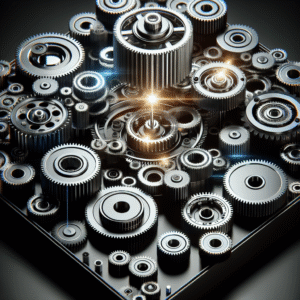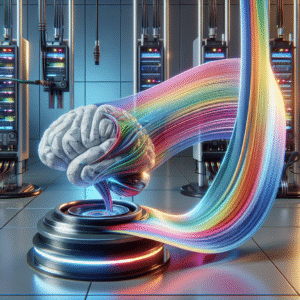Tiny Machine Learning: Revolutionizing Intelligent Devices in the Age of Miniaturization
Table of Contents
- Introduction
- What is Tiny Machine Learning?
- The Importance of Tiny Machine Learning in Today’s World
- Key Technologies and Techniques Behind Tiny Machine Learning
- Applications of Tiny Machine Learning Across Industries
- Challenges and Limitations of Tiny Machine Learning
- Future Trends in Tiny Machine Learning
- How to Get Started with Tiny Machine Learning
- Conclusion
Introduction
We’re living in an exciting time where technology is getting smaller and smarter, and one of the coolest developments to emerge is Tiny Machine Learning, or TinyML for short. Picture this: your smartwatch not only keeps tabs on your health stats but also analyzes them right there on your wrist, without needing to ping the cloud for answers. Sounds like something out of a sci-fi movie, right? But it’s real, and it’s all thanks to the amazing capabilities of TinyML. Recent research from Gartner shows that global AI software revenue is expected to hit over $62 billion this year, with a big chunk coming from edge computing and TinyML applications.
This blog post will take you on a journey through the ins and outs of Tiny Machine Learning, highlighting its importance, the tech that powers it, its applications across different fields, and some of the bumps in the road it faces. By the end, you’ll see just how TinyML is set to reshape our tech landscape and enhance our daily lives in some pretty remarkable ways.
What is Tiny Machine Learning?
So, what exactly is Tiny Machine Learning? Simply put, it’s about using machine learning algorithms on devices that don’t have a ton of processing power—think microcontrollers and edge devices. Unlike traditional machine learning, which usually relies on hefty computational resources and a solid internet connection, TinyML lets devices process and analyze data right on the spot.
Understanding TinyML Components
To work its magic, TinyML relies on a few key components:
- Machine Learning Models: These models are specially optimized to run smoothly on low-power hardware.
- Hardware: Microcontrollers and sensors that can handle machine learning algorithms.
- Data Processing: Smart techniques to manage data efficiently right on the device.
Key Differences Between TinyML and Traditional ML
While traditional machine learning often leans on cloud processing and high computational power, TinyML is all about working on the edge. This means it can deliver quicker responses, enhance privacy, and cut down on latency. Take a smart thermostat, for example—using TinyML, it can learn your preferences and adjust the temperature without needing to chat with a cloud server.
The Importance of Tiny Machine Learning in Today’s World
The growth of TinyML isn’t just about new technology; it’s a game-changer in how we use data and machine learning in our everyday lives. With the Internet of Things (IoT) becoming more prevalent, there’s a real need for smart devices that can work independently.
Enhancing Privacy and Security
By keeping data processing local, TinyML cuts down on the need to send sensitive information over the internet. This not only helps keep your personal data secure but also eases growing worries about privacy in our digital age.
Reducing Latency and Power Consumption
When it comes to applications that need real-time data processing—like self-driving cars or health monitoring—you can’t afford any delays. TinyML allows for lightning-fast data analysis, so devices can react immediately to changes in their environment. Plus, because it works on low-power devices, TinyML is all about energy efficiency, too.
Key Technologies and Techniques Behind Tiny Machine Learning
There are some pretty innovative technologies and techniques that make Tiny Machine Learning tick, allowing it to shine in a variety of applications.
Model Compression Techniques
To squeeze machine learning models onto these resource-constrained devices, we use some clever model compression techniques:
- Quantization: This involves reducing the precision of model weights, which helps to lower memory and computation needs.
- Pruning: This technique removes unnecessary weights from the model, simplifying it without sacrificing much accuracy.
Frameworks Supporting TinyML
To make TinyML more accessible, a bunch of frameworks have popped up, including:
- TFLite Micro: This is a lightweight version of TensorFlow that’s made specifically for microcontrollers.
- Edge Impulse: A platform designed to help developers easily build and deploy TinyML applications.
Applications of Tiny Machine Learning Across Industries
TinyML is making a splash across different sectors, showcasing its flexibility and efficiency in real-world scenarios.
Healthcare
In healthcare, TinyML powers wearable devices that monitor vital signs and can even predict health issues before they escalate. For instance, a TinyML-enabled smartwatch can analyze your heart rate patterns and alert you if something seems off.
Smart Homes
Smart devices like thermostats, security cameras, and even smart speakers are increasingly incorporating TinyML. This integration allows them to process user commands and environmental data in real-time, making our homes smarter and more responsive.
Agriculture
Farmers are tapping into TinyML for precision agriculture, using sensors to track soil moisture and crop health. This data-driven approach helps them make timely decisions, ultimately boosting yields and making better use of resources.
Challenges and Limitations of Tiny Machine Learning
Even though TinyML has a bright future, it’s not without its challenges that need to be tackled to unlock its full potential.
Resource Constraints
While TinyML is tailored for low-power devices, sometimes the limited processing capabilities can restrict the complexity of the models we can use. This is why ongoing research into more efficient algorithms is so important.
Data Quality and Availability
For machine learning models to perform well, they need high-quality data. Unfortunately, the data collected by edge devices can sometimes be noisy or insufficient, which can hurt the model’s overall performance.
Future Trends in Tiny Machine Learning
The future for Tiny Machine Learning looks promising, with several trends poised to shape its development.
Integration with 5G Technology
The rollout of 5G networks is expected to boost TinyML’s capabilities. With quicker data transfer rates and lower latency, devices will communicate better, leading to even smarter applications.
Collaboration with AI Edge Computing
As AI evolves, integrating TinyML with edge computing will allow for more powerful applications, enabling greater processing capabilities while still enjoying the perks of local data handling.
How to Get Started with Tiny Machine Learning
If you’re curious about jumping into the world of TinyML, here are some steps to get you started.
Learn the Basics of Machine Learning
It’s essential to understand the fundamentals of machine learning. There are countless online resources, courses, and tutorials out there to help you build a solid foundation.
Experiment with TinyML Frameworks
Nothing beats hands-on experience! Frameworks like TFLite Micro and Edge Impulse provide user-friendly environments for developing TinyML applications. Start with simple projects—you’ll grow your confidence in no time.
Conclusion
The rise of Tiny Machine Learning marks a significant milestone in the journey of intelligent devices. By empowering machine learning on devices with limited resources, TinyML is set to revolutionize industries and enhance our quality of life. As technology continues to advance at lightning speed, embracing TinyML opens up doors to innovative solutions that prioritize both efficiency and privacy. If you’re eager to explore this fascinating field, now’s the perfect time to dive in. Join the movement of intelligent devices and be part of the exciting future that’s unfolding today!






